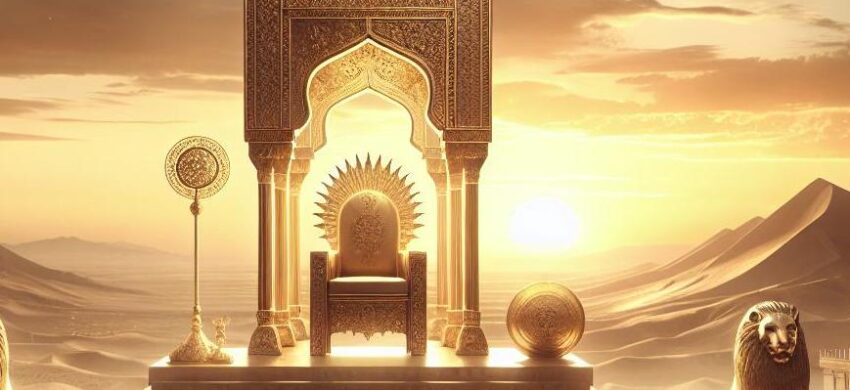Xerxes ascended the Achaemenid throne in 486 BC, following the death of Darius I. His coronation signified the beginning of a reign influenced by assertions of authority to secure power over the vast Persian empire.
Xerxes’ immediate initiatives were critical, beginning with the suppression of thorny rebellions. Egypt, Babylonia, and various regions under Persian command exhibited turbulence; quelling these uprisings was fundamental in consolidating his power.
Contrary to his father, Xerxes adopted a ‘Divine Right of Kings’ persona often manifesting a grandiose disposition. This form of authority was depicted prominently in his construction projects, including his regal palace in Persepolis showcasing exquisite craftsmanship, and the Gate of All Nations, serving as an embodiment of power and robust dominion.
Just as important to this display of power was his military might, illustrated in Grecian campaigns such as the Battle of Thermopylae. These pursuits, despite mixed successes, demonstrated the force of the Persian Empire under his rule.
Additionally, Xerxes held a firm grip on the Royal Road, a Persian Empire-wide communication channel and trade route, allowing greater control over his territories, and reinforcing his sovereignty.
In conclusion, Xerxes’ reign was shaped by these initial developments, which portrayed him as a ruler who wielded power through manifest power, grandeur, military might, strategic construction, and infrastructure control.
#1. Question text: Who was Xerxes' predecessor as ruler of the Achaemenid Empire?
C is the answer. The text states that Xerxes succeeded to the Achaemenid throne following the death of Darius I.
#2. Question text: What was one of the first challenges Xerxes faced upon ascending the throne?
B is the answer. According to the text, Xerxes’ immediate initiatives were critical, beginning with the suppression of thorny rebellions in regions under Persian control.
#3. Question text: How did Xerxes differ from his father in his approach to rulership?
C is the answer. The text states that, contrary to his father, Xerxes adopted a ‘Divine Right of Kings’ persona.
#4. Question text: In which battle did Xerxes showcase his military might?
C is the answer. The text refers to Xerxes’ military might being displayed in the Battle of Thermopylae.
#5. Question text: What did the Royal Road symbolize in Xerxes' reign?
C is the answer. Per the text, Xerxes held firm control over the Royal Road, which allowed him greater control over his territories and reinforced his sovereignty.
#6. Question text: What were the key qualities defining Xerxes' reign, according to the text?
B is the answer. The text concludes that Xerxes’ reign was shaped by his grandeur, control over infrastructure, military might, and his manifest power.
 |
 |
 |




